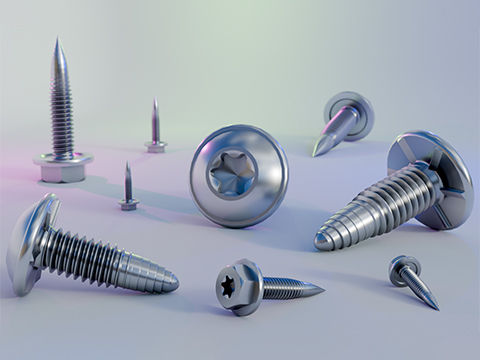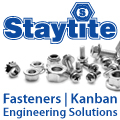
Posted to News on 17th Feb 2025, 15:15
Fourth generation EPW offers greater fastening solutions
TR Fastenings reports that its patented EPW screw, with a self-extruding and thread-forming design, is now in its fourth generation and provides an efficient, high-quality and cost-effective solution when fastening thin sheet metal.

EPW is able to create an extruded collar before forming its own internal thread in sheet metal when fastened, thus ensuring a secure fastening. Installation into thin sheet metal is possible due to the increased thread engagement through extrusion, also enabling maintenance - the metric thread profile of the EPW ensures the fastener can be re-used several times, offering its users advantages when it comes to recyclability and supports the global movement Right to Repair.
A key feature is its ability to be installed with handheld power tools. Sven Brehler, Director of Engineering at TR, explains: "For example, we already have many flow drill screws in the automotive market, being installed by highly automated robotic lines, these are complex capital investments, making it very difficult to be agile, adapting production lines with changing demands."
The screw's standard internal hexalobular drive system allows standardised tooling to be used when installing or removing the fastener, creating an advantage as most service engineers will already be carrying those tools with them on a daily basis. Generally, this is offering more flexibility during installation, with a potential to reduce total cost of application.
Originally developed for the white goods industry, the EPW screw was born from a request to manufacture a flow forming screw which both outperformed other products in the market and was able to be installed using handheld power tools into a pilot hole. But shifts in market demand ultimately triggered incremental innovation leading to four generations of this innovative product.
"The fourth generation is self-piercing," highlights Sven. "Whereas the previous versions were developed for use with a pilot hole. The original variant concentrated on installation by hand or low-end automated tools and required a relatively low driving speed. The second and third generations followed an organic evolution to suit a wider range of materials, which were available in the market. The aim of each variant was to decrease the force needed during installation, whilst keeping low RPM. Continued market demand led us to develop the self-piercing variant of EPW.
"The idea of our EPW range is to give the customer maximum flexibility in joining, suitable to their budget and size of production line, whilst aiming to get to market as quickly as possible through providing a solution which is reliable and reusable."





